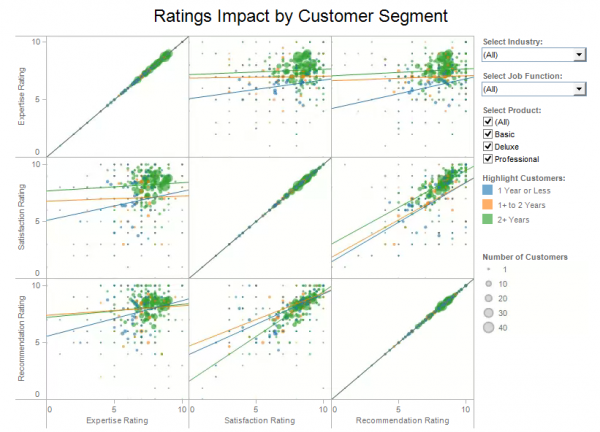I spent the day in San Francisco attending the Tableau 8 Roadshow event.
Tableau is an amazing piece of software that helps you link to data in various forms – SQL databases, Excel spreadsheets, Google analytics, and many, many more – and use that information to create stunning visualizations. It’s insanely easy to use, and quite frankly is one of the most impressive pieces of software I’ve ever used to present data in an easy to understand manner.

